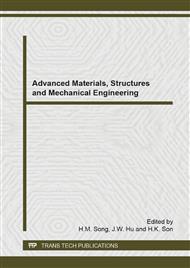p.1041
p.1049
p.1055
p.1062
p.1066
p.1070
p.1074
p.1079
p.1083
Analysis on the Application of PV Technology in Terms of Tranditional Roof House. Case Study: Julang Ngapak Sundanese Traditional Roof Form
Abstract:
This study departs from the thought that the implementation of new technology should consider the local context or the concept of “genius loci”. Based on this conception, this study is aimed to investigate whether the implementation of the current technology (here is PV technology) can be in accordance with the initial local traditional architectural form. To accommodate that objective, the roof form of the Sundanese traditional house called “Julang Ngapak”, located in West Java, was studied to analyse its particular orientation, North and South in regards to the solar incident level. The campus building of Bina Nusantara University, located in Jakarta, was selected for the study of PV roof implementation. The method of the study is simulation by applying the EnergyPlus software. There are three types of PV roof which were simulated to investigate the electricity production of the solar cell. The final deliveries of this study are to compare and to analyse the solar irradiance arrive on each type of roof and to define the most appropriate roof form in terms of orientation for implementing the BIPV concept on building particularly in Jakarta region.
Info:
Periodical:
Pages:
1066-1069
Citation:
Online since:
September 2014
Authors:
Keywords:
Price:
Сopyright:
© 2014 Trans Tech Publications Ltd. All Rights Reserved
Share:
Citation:


